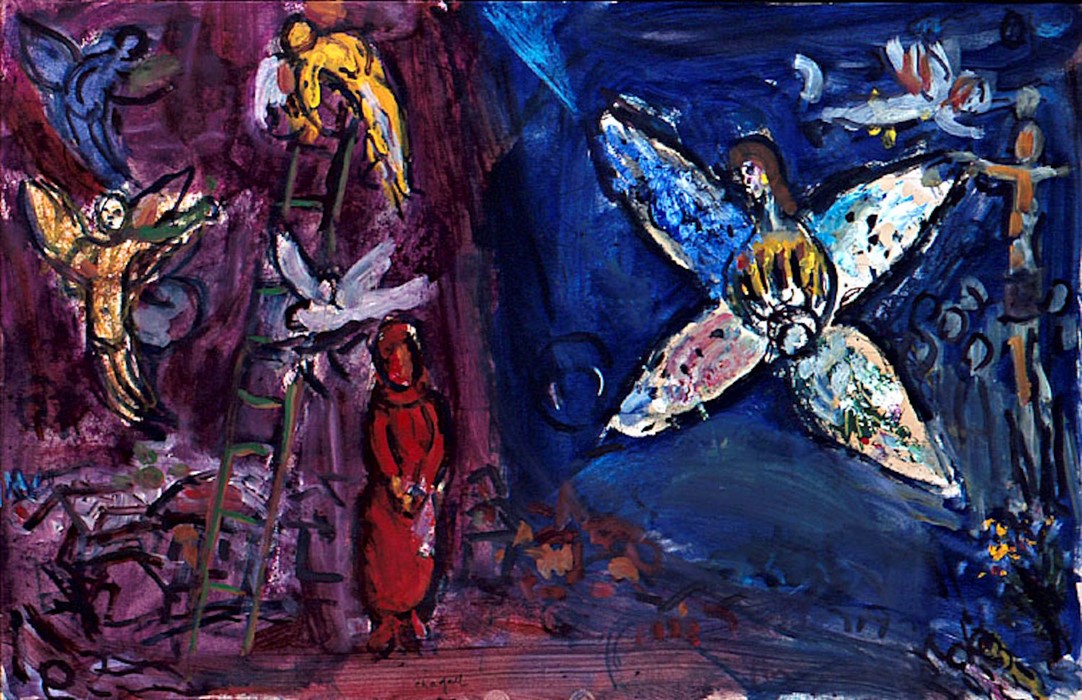From abstracted spirits to Renaissance cherubs, AnOther considers the most famous artistic impressions of angels
Angels are creatures of spirit – they inhabit an otherworldly space and exist as deeply complex beings. Thanks to the earliest Christian artists some 2,000 years ago, who adopted Pagan, Egyptian and Assyrian artistic traditions, angels have become a staple in Western art. Associated with Christmas because of the story of the Nativity, angels are synonymous with the festive season, and their divine grace and beauty features on everything from cards to crackers. Here, art historian Harry Seymour delves into the archives to reveal the seven most famous angels in art.
Jacob’s Dream by Marc Chagall, 1966
Jacob’s ladder is the connection between the earth and the heavens that must be climbed in order to reach salvation, but angels and demons both fight over the ascenders, trying to drag them in either direction. Chagall’s interpretation shows joyful acrobatic angels circling the steps from as seen in a dream that he had. The four-winged angel is a type known as a Seraphim who is amongst the highest ranked angels – here he illuminates the composition by bringing a divine light that brightens the night-time setting of the energetic vision of the struggle between good and evil.
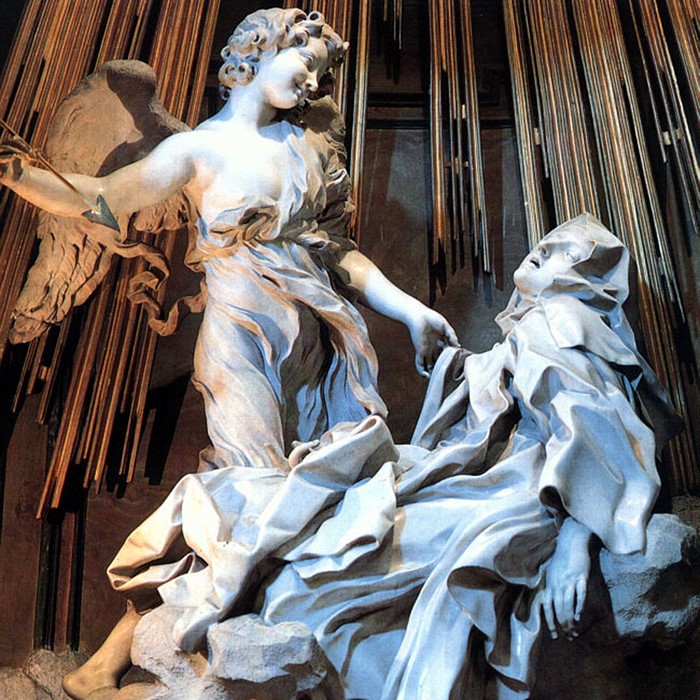
The Ecstasy of St. Theresa by Gian Lorenzo Bernini, 1644-52
This masterpiece of Baroque art depicts the moment St. Theresa’s heart was pierced by a golden arrow-wielding angel – she is in a moment of both complete agony and pure bliss. Commissioned by Pope Innocent X, the sculpture caused outrage at its unveiling for being so highly erotic, but it signalled Bernini’s return to fame after being charged with slicing his wife’s face after he found her in bed with his brother.
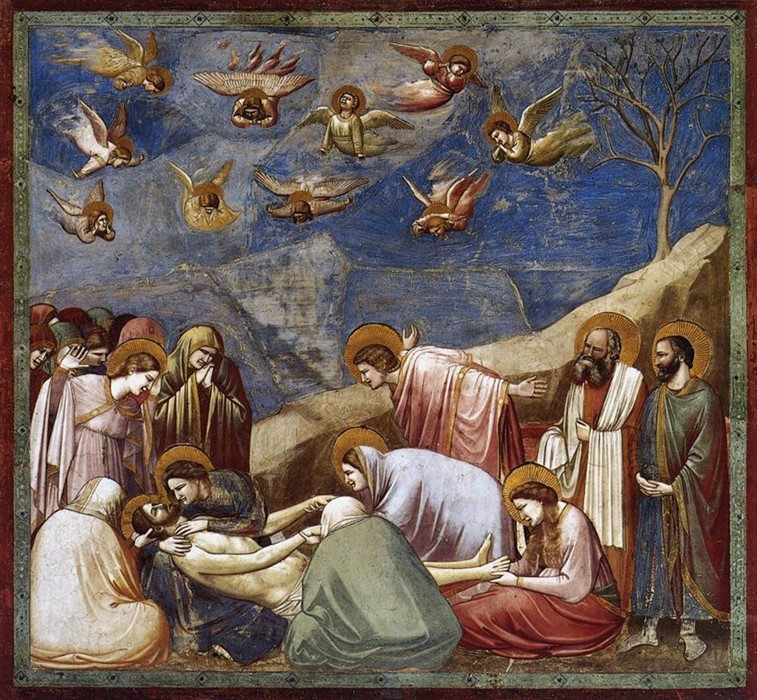
Crying Angels by Giotto, 1305-13
Enrico Scrovegni commissioned this tomb to repent for his sin of charging interest on loans – the whole building is an artwork, only featuring windows on one wall to perfectly illuminate the interior that depicts the life of the Virgin. These crying angels show the very real expression of pain at the death of Christ, despite their divine nature. One tenderly uses his dress to wipe the tears from his eyes in this humbling fresco that is considered the first ever Renaissance artwork.

The Saint Madonna by Raphael, 1515-16
Possibly the most famous angels on the list are this charming pair, who are represented as being the same age as Jesus, and have tousled hair and feathered wings. However if you look closely, Raphael has painted the whole sky as cherubic faces of youthful angels – it’s a sea of compassion as the Virgin presents the infant Christ to the faithful. These two have unwittingly become the symbol for the childhood innocence in angels, captured in their sublimely quixotic expressions. Rumour has it they were the children of Raphael’s model for the Virgin who looked upon him painting with these expressions that he then quickly copied.
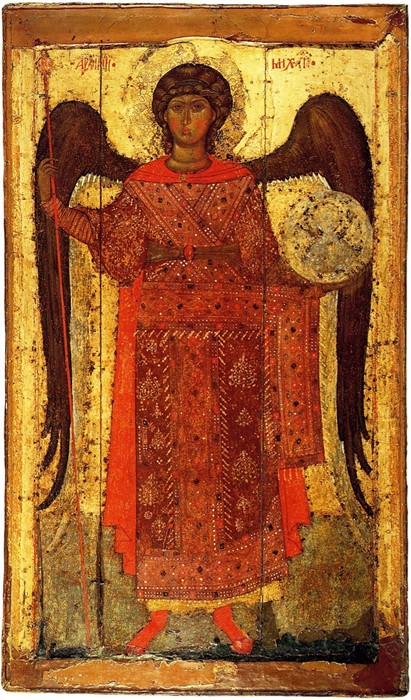
The Archangel Michael by Anonymous, 1299
During the Byzantine Empire angels were celebrated as the protectors of the citizens. Painted wooden icons of the most venerated angels adorned church walls and they were kissed and sung to. No known names of icon painters survive, as they didn’t consider themselves artists but a conduit for the hand of God, who would paint through them. To fully understand the nature of these artworks you have to imagine them through the smoke of incense, song of hymn, smell of oil lamps and the touch of the wood on your lips. The gold surface reflects all the senses and helps the audience transcend to another world.
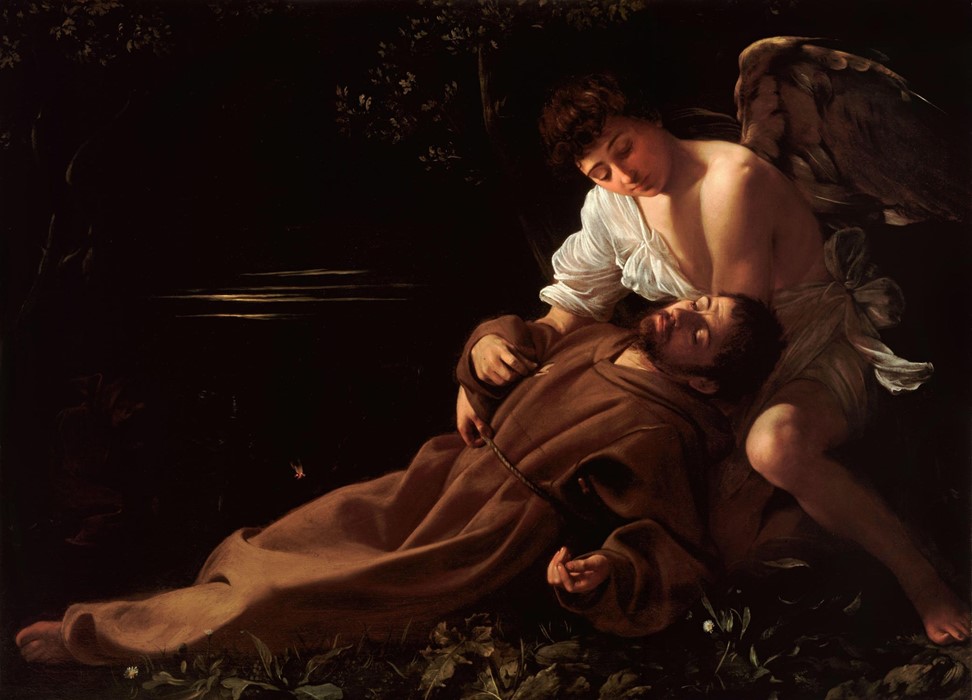
St. Francis of Assisi in Ecstasy by Michelangelo Merisi da Caravaggio, 1595
In this monumental painting, the Baroque master of shadows depicts the moment St. Francis receives the Stigmata from a vision of Christ in his hands and feet, while living as a hermit in the mountains in 1224. The first of Caravaggio’s religious scenes, the picture has a strong light descending down on the angel directly from above – supposedly Caravaggio achieved this by tearing a circular hole in the roof and upper floors of his house down to the ground level studio so his models would be cast in a sharp and angular light amidst the dark, which quickly got him evicted. This picture also broke the model for showing St Francis pouring blood and in agony – instead the mood is serene and tender.
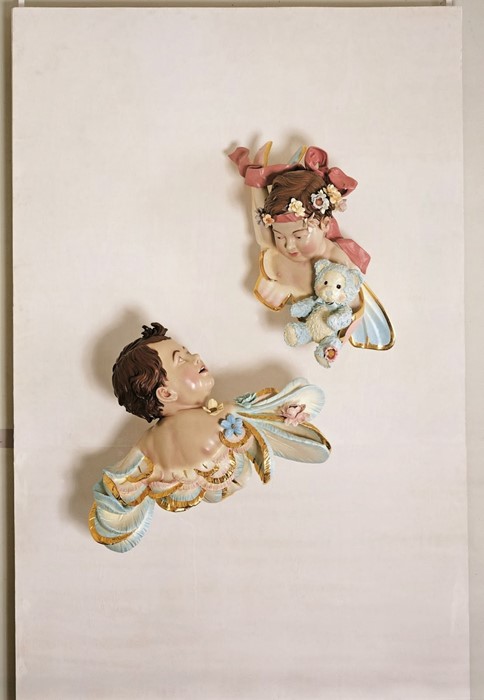
Cherubs by Jeff Koons, 1991
The self-appointed 'King of Kitsch', Jeff Koons hit the nail on the head with these cherubs – they’re banal, exploitative and sickly, yet overall a charming flirt. It’s no wonder he made his first millions as a banker. But none of the above makes them any less valid as art – it’s a conscious comment on the nature of the art world today – from both the point of view of the artist and audience, where everything has become a caricature.
